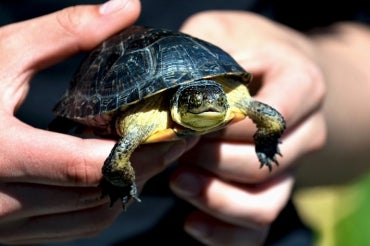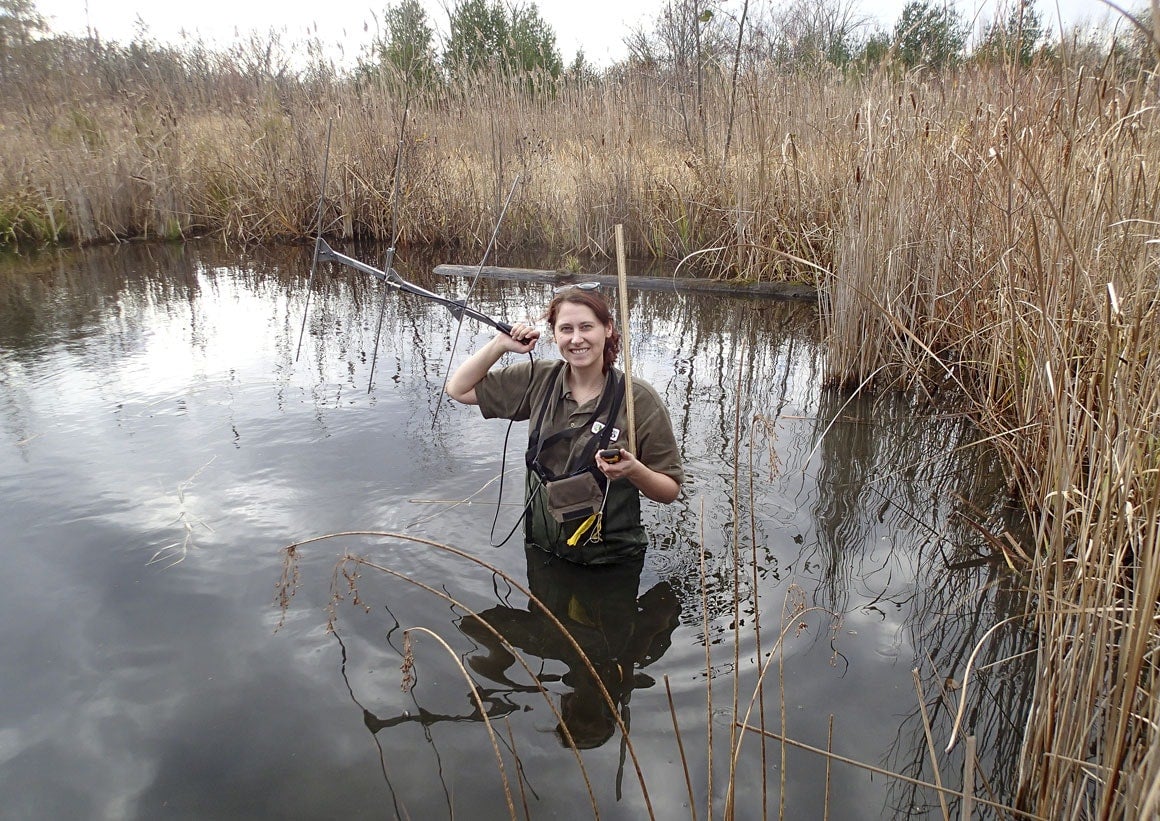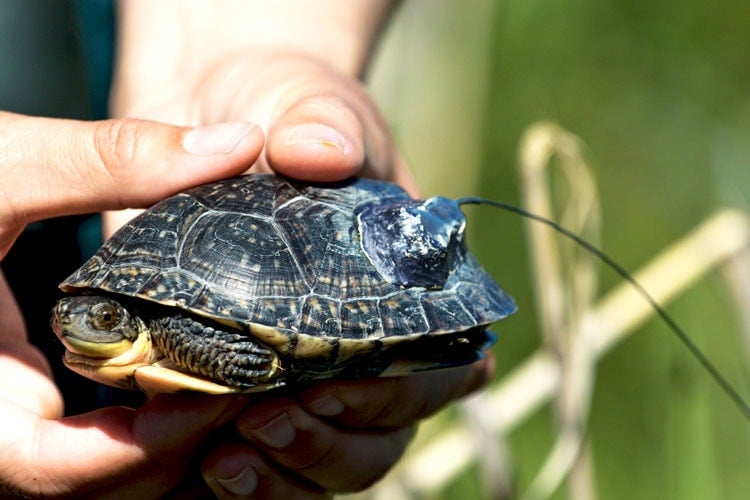Cowabunga! U of T Scarborough researchers team up with Parks Canada to save the turtles

Published: July 14, 2016
Researchers at U of T Scarborough are teaming up with Parks Canada and the Toronto Zoo to help a threatened species rebound in the Rouge National Urban Park.
A total of 36 Blanding turtles – many of them fixed with small radio transmitters – were recently released into a restored wetland section of the park. They will be tracked by U of T Scarborough students to learn more about the turtles’ behaviour in the wild.
“We want to know how the turtles use the restored wetlands, if it offers a suitable wintering habitat and to find the spots where they are most successful,” says Shannon Ritchie, a master’s student in the ecology and evolutionary biology program at U of T Scarborough.
See the CBC story
The odds are certainly stacked against the turtles. A loss of habitat, high predation from skunks and raccoons and a tendency to travel long distances on land to find a suitable nesting spot puts them at an increased risk of being killed. They also can’t start reproducing until around age 12 to 15.
“When you lose one turtle it can take a long time to replace it. They have a very low chance of survival and it’s why conservation efforts are so important,” says Ritchie, who is pictured below.

Named in honour of American naturalist Dr. William Blanding, the Blanding turtle is easily recognizable by its buggy-eyes and bright yellow chin that makes it look like its smiling. It’s medium-sized by turtle standards with an average shell length of 18 to 23 cm and can live to be as old as 80, although finding one in the wild as old as 60 is rare, notes Ritchie. In the wild they can be found in pockets across Ontario and northern New York State.
The turtles released into the Rouge are the product of the Toronto Zoo’s Headstarting program. The program takes eggs from nests in precarious locations with a low chance of survival like farmers’ fields and construction sites to the zoo where they are incubated. The turtles are then raised for two years in the zoo’s husbandry area before being released.
Ritchie says that the turtles are released when they’re “the size of a medium potato,” which is just large enough to deter most predators.
The wetlands the turtles will be released into were restored with the help of the Toronto and Region Conservation Authority. The goal of the project is to also gain as much valuable information on the best conservation strategies and to help with future preservation efforts.
“We want to see which habitats the turtles prefer during certain times of the year, but also if they’re able to learn a new ecological system and if that behaviour is exploratory or knowledge based,” says Associate Professor Nick Mandrak, an expert on biodiversity and conservation.
Tisha Tan, a student in the conservation and biodiversity stream of UTSC’s professional master’s of environmental science program, will also be looking at whether turtles released directly into their new environment behave differently than those that are acclimatized to their environment first before being released.
“This is where the partnership between the university and the Toronto Zoo really comes into play – we’re doing research that will help inform future decisions related to the program,” adds Mandrak.

Blanding turtle outfitted with a small radio transmitter. Photo by Joren Romaniuk
Don Campbell is a writer with U of T Scarborough



